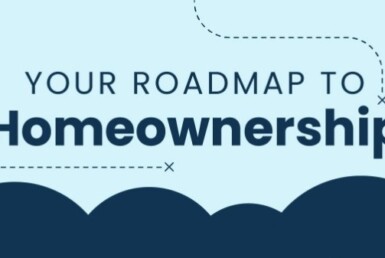Rising Mortgage Rates and the Suffolk County Housing Market

There’s no shortage of theories about how (and when) the Suffolk County housing market boom will end. We thought a return to the office would slow the wave of remote workers splurging on more spacious suburban homes. We expected demand to pull back along with stimulus aid. We predicted inventory would rise after the end of the government’s mortgage forbearance program. Nothing has moved the needle yet—but could soaring mortgage rates be the silver bullet?
Buyers begin to feel the impact.
The housing market just saw its largest 12-week boost in mortgage interest rates since the 90s, skyrocketing from 3.11% in December to 4.42% in March—and the climb is not over yet.
During the pandemic, the Federal Reserve pushed mortgage rates down to record-low levels—below 3%—which fueled demand, increased buying power, and offset soaring home prices. However, the opposite happens when mortgage rates rise.
Higher borrowing costs and record home price growth would together price buyers (and even some investors driving a large portion of home sales) out of the market. This is the reality we can expect if mortgage rates climb to 5% or higher. A quick crunch of the numbers demonstrates the impact.
A $400,000 mortgage at a 3.11% fixed rate for 30 years leaves homeowners with a $1,710 monthly payment. That figure climbs to $2,008 at 4.42% and skyrockets to $2,147 at 5%. With home prices up 18.8% over the past year, “tight squeeze” is an understatement for would-be buyers. (On the positive side, rising rates could mean fewer buyers able to qualify for a mortgage, which in turn could mean fewer bidding wars.)
Higher rates could slow the madness.
Despite being fantastic for sellers, the current housing market is quite unhealthy. The rate of home price growth is unsustainable. The median sale price increased by double-digit percentages across multiple Suffolk County towns including Coram (+46.6%), Mount Sinai (+33.4%), Selden (+21.8%), Holbrook (+16%), Medford (+15.3%), and Lake Ronkonkoma (+13%).
Suffolk County home prices in general are up 12.3% since February 2021 with a $55,858 boost in median sale price. More than half (54%) of homes sold over asking as the average number of days on the market dropped 9.3% to 52 days. Almost half (48%) of homes sold in under 30 days.
Homes in areas like Oakdale, Sayville, Bayport, and Blue Point tend to sell more slowly, taking a couple of months to accept a bid for an 1,800-square-foot, one-story ranch. Today, buyers are snatching up the same types of homes in less than a week. Buyers from Brooklyn, Queens, and Nassau are also gravitating towards the great schools and waterfront properties in areas like Bayport-Blue Point.
Just based on simple economics, home price growth can’t outpace income growth forever. Higher rates could slow the madness, boosting inventory to create a more balanced market. However, it’s yet to happen. In February, inventory levels dipped again, creating an underlying yet familiar theme for buyers: bid high or rent.
More price growth on the horizon.
Home prices could continue growing despite rising mortgage rates, which is interesting. Forecasts project a 17.8% growth in home prices in the next year, which could slow to 3.8% by the start of 2023. How can this happen? Simple: demographics.
Millennials—the largest demographic in history—born during the generation’s five largest birth years (1989-1993) hit the first-time homebuying age of thirty during the five-year window between 2019 and 2023.
Millennials were the major buying force during the pandemic, driving up home prices through fierce bidding wars. The core demographic moved from New York City—skipping over Queens—straight to Long Island and farther out to Suffolk County, where lower taxes and more house for the money made the decision a no-brainer.
Other young buyers moved from small digs in South Ozone Park, Queens to two-bedroom Suffolk County houses with nice outdoor spaces, huge backyards and proximity to shopping, restaurants, parks, and the Long Island Rail Road. Open concept homes with extra bedrooms doubling as office spaces and home gyms topped the list for most Millennial buyers.
Compounded by the underbuilding of 4 million homes following the Great Recession, the basic laws of supply and demand will keep pricing pressure on an upward swing.
The supply and demand imbalance.
Combined with unstoppable demographic forces, strong income growth is propelling high demand. Meanwhile, homeowners with a low mortgage rate may hesitate to sell and give up the benefit of sub-3% mortgage interest rates, further limiting housing supply.
Low inventory is the biggest factor in home prices—and the supply and demand imbalance will linger for the long run. In February, the National Association of Realtors reported just 870,000 homes on the market—a drop in the bucket for a pool of millions of buyers. Demand even remained strong over the seasonally slower winter months when buyers rushed to lock in low mortgage interest rates.
FOMO vs. logic.
Logic suggests a rise in rates would cool some of the demand. Home prices could also drop due to the higher cost of financing. However, the current market shows the opposite. FOMO (Fear of Missing Out) is behind the wheel. Afraid of rising rates and home price appreciation, homebuyers are doubling their efforts to secure a loan.
The new construction home dilemma.
Another factor is new construction homes—and builders are still behind the pace of demand. Builders are making progress—but not enough to cover over a decade of underbuilding in the new home industry. The lack of new home builds further accelerates the pent-up demand. However, there is some light at the end of the tunnel.
In February, housing starts increased to 1.769 million—the highest level since June 2006. However, we need to build at this level for a couple more years to bring a meaningful amount of inventory to the market.
How the trend could reverse.
Two things could force home prices down: continued upward mortgage interest rates and a financial hit. 5%-plus mortgage interest rates with a 20%-plus pullback in financial markets would together lower purchasing power and cool housing demand.
Baby boomers with large equity positions in their homes who stayed put during the pandemic could decide to downsize down the road, bringing new inventory to the market. The X-factor is the possibility of an expanded war in Europe.
If a mild recession happens, mortgage rates could dip, flooding a new wave of buyers to the market and potentially sparking a refinancing frenzy. Until that happens, home prices will stay high as rising mortgage rates continue lighting a fire under buyers who are more determined than ever to buy before rates increase again.
The next move for buyers.
Most buyers fall into one of two categories: buy before rates rise or wait until home prices and rates come down. For buyers on the fence, the next move comes down to your unique situation and budget.
If you want to improve your living situation and buy a new home you plan to stay in for years, buying in 2022 makes sense—if you can afford it with a reliable job and healthy income. There’s no reason for buyers in a favorable financial position to pump the brakes.
Despite rising, mortgage interest rates are still affordable based on historical data. Just consider the 18% rates back in 1981. However, timing the market is never a wise idea. Focusing on what meets your family’s needs without overextending is the name of the game. If you’re waiting for supply and demand to change, you could be waiting a while.
No reason to fear the worst.
Between inflated home prices, extremely low inventory, fierce bidding wars, and now rising mortgage interest rates, some people fear hearing the worst word in the housing market: crash. However, this is nothing like the last time—and home values are not poised to plummet.
Last year, buyers had the benefit of lower mortgage rates to help offset sky-high home prices. Today, record-low rates are off the table and buyer demand should wane. Home prices should drop but not tank overnight like a housing market crash.
Strong demand from buyers willing to stretch their budgets should soften the blow of rising rates without sending home prices crashing down. Although higher than in mid-2020 through late 2021, current rates are still competitive on a historical basis.
In February, the 3.76% average rate for a 30-year mortgage read like a huge jump from the 2.81% average rate in February 2021. However, go back to the 4.37% rate in February 2019 or the 5.13% rate in February 2009 and the current rate is a drop. 3.76% is a bargain compared to the 7% to 8% range in the 90s.
Researchers at the Dallas Fed see a bubbly housing market forming—but not towards a 2008-style crash. Households are in better shape today. In 2007, we put 7% of our disposable personal income towards mortgage debt service payments. Today, that figure is down to just 3.8%.
There is no expectation of the same global financial crisis. Household balance sheets are in better shape—and excessive borrowing is not fueling the boom like last time.
Spiking mortgage rates can help tame runaway home price growth before sky-high prices lead to a bursting bubble. 5%-plus mortgage rates would price buyers out of the market and discourage investor activity, which makes up a large percentage of home sales today.
The bottom line.
In 2006, mortgage rates shot up quickly. Many households had variable mortgage rates, which sped up the demise of subprime mortgages and led to the inevitable financial crisis. This time, rising mortgage rates would deter some would-be buyers but with little impact on homeowners. Today, around 99% of mortgages have fixed rates.
Buy or sell a Suffolk County home with Team Rita.
Ready to buy or sell a Suffolk County home? Contact us today to search our database of local inventory, find an open house, or explore our featured properties for sale.





